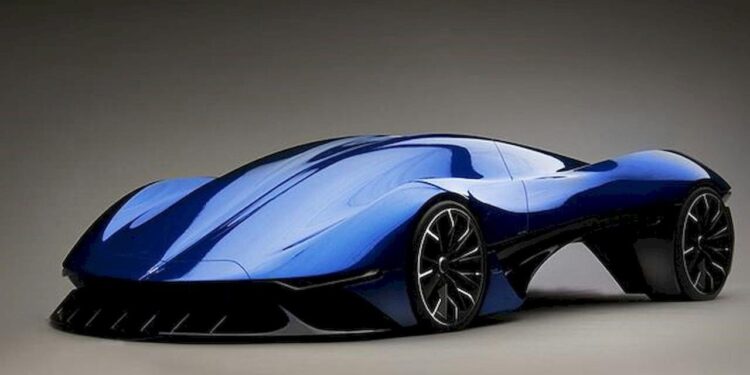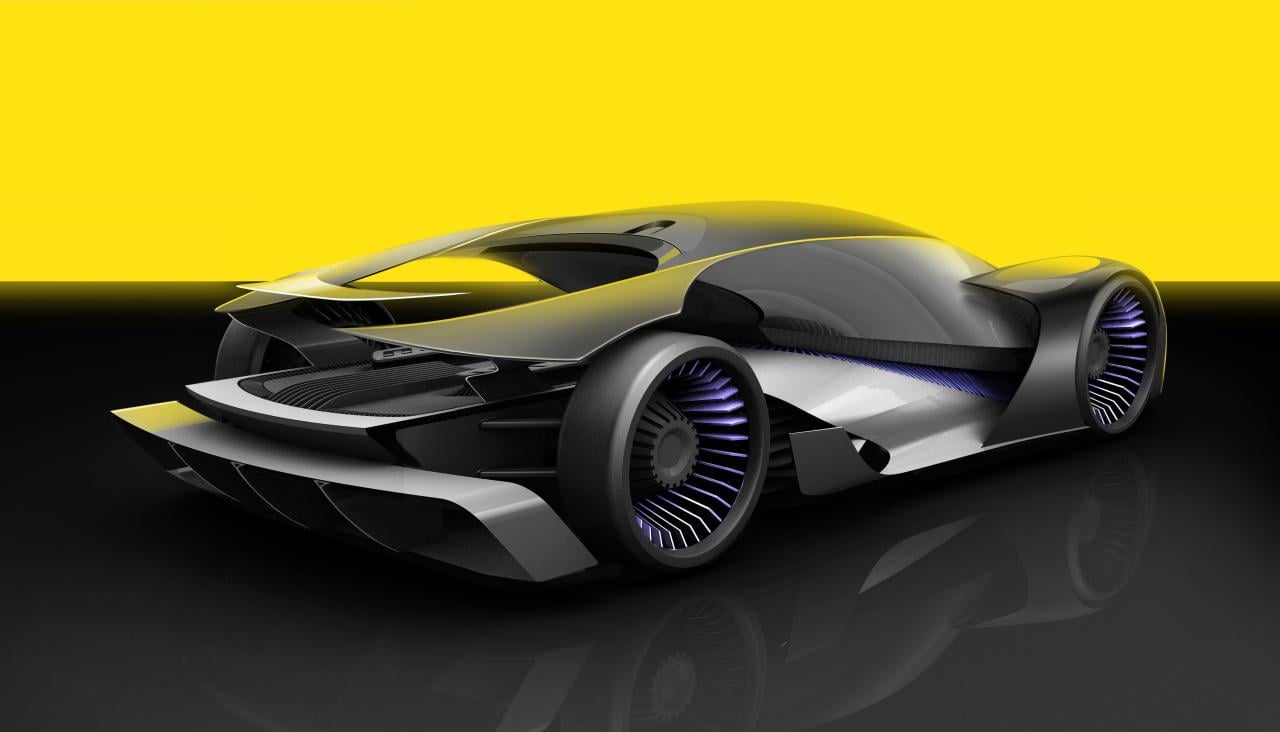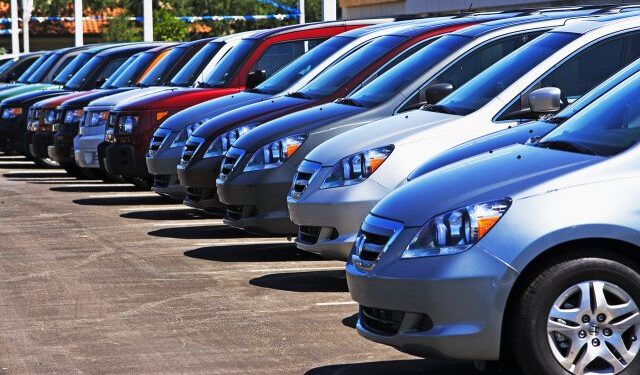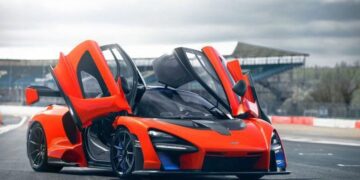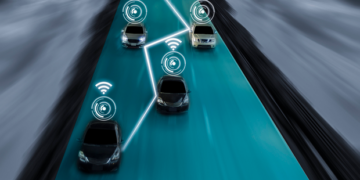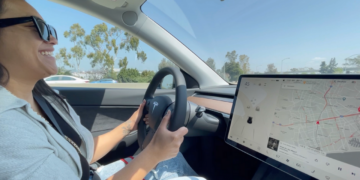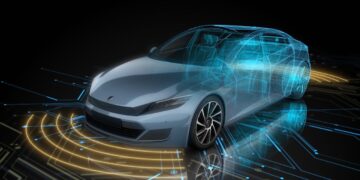The automotive industry is experiencing a revolution as visionary car designers blend art with cutting-edge technology to create vehicles that look, feel, and perform like never before. In a world where sustainability, connectivity, and digital innovation drive progress, futuristic car designs are not merely aesthetic statements—they are functional marvels that redefine mobility. This article delves into the transformative journey of car design, exploring emerging technologies, innovative materials, and the creative processes that underpin the development of tomorrow’s vehicles. We will examine how car designers are embracing futuristic concepts to meet evolving consumer demands and regulatory challenges, while also paving the way for sustainable and intelligent mobility solutions.
The Evolution of Car Design: Past, Present, and Future
Over the decades, car design has undergone dramatic transformations. From the boxy silhouettes of early automobiles to the aerodynamic curves of modern supercars, the evolution of design reflects broader technological advancements and shifting consumer expectations. Today, futuristic car design is driven by three main forces:
A. Technological Innovation: Advances in artificial intelligence (AI), robotics, and material science have enabled designers to experiment with unprecedented forms and functions.
B. Environmental Concerns: The urgent need to reduce carbon emissions and improve energy efficiency has spurred the development of eco-friendly vehicles.
C. Changing Lifestyles: As consumers increasingly prioritize connectivity, comfort, and personalization, designers are challenged to integrate technology seamlessly into every aspect of the vehicle.
In this era of rapid transformation, car designers are not only creating vehicles that are visually striking but also highly functional and sustainable.
Key Drivers of Futuristic Car Design
Several factors are fueling the push towards futuristic car concepts. These drivers are shaping the way designers approach every facet of vehicle development.
A. Technological Advances
Technological breakthroughs have dramatically expanded the design toolkit available to automotive engineers. Innovations in computer-aided design (CAD), virtual reality (VR), and augmented reality (AR) now allow designers to create, test, and refine concepts virtually before building physical prototypes. This has led to:
- Enhanced Precision: Detailed simulations enable designers to predict aerodynamic performance, structural integrity, and even driver behavior.
- Rapid Prototyping: Virtual models can be iterated quickly, reducing development cycles and allowing for more experimental designs.
- Integration of AI: Machine learning algorithms assist in optimizing designs for both performance and aesthetics.
B. Consumer Demands
Modern consumers are increasingly tech-savvy and environmentally conscious. They demand vehicles that not only deliver superior performance but also align with their lifestyle values. Key consumer expectations include:
- Personalization: Customizable interiors, digital interfaces, and adaptive driving modes.
- Connectivity: Seamless integration with smartphones, smart homes, and other digital ecosystems.
- Sustainability: Eco-friendly materials and energy-efficient powertrains that reduce the carbon footprint.
C. Environmental and Regulatory Pressures
With stricter emissions regulations and growing environmental awareness, the automotive industry is under pressure to innovate responsibly. Designers are now tasked with:
- Reducing Weight: Utilizing lightweight materials to improve fuel efficiency without compromising safety.
- Enhancing Efficiency: Developing aerodynamic designs that reduce drag and energy consumption.
- Incorporating Sustainable Materials: Using recyclable and renewable resources in vehicle construction.
Revolutionary Technologies in Car Design
Futuristic car design is at the intersection of art and science. Designers are harnessing revolutionary technologies to push the boundaries of what is possible in automotive design.
A. Electric Vehicles (EVs) and Hybrid Powertrains
The transition from internal combustion engines to electric and hybrid powertrains represents one of the most significant shifts in automotive history. Electric vehicles not only reduce emissions but also provide designers with greater flexibility in vehicle architecture. Key innovations include:
A. Battery Integration: Modern EVs integrate high-capacity batteries into the vehicle structure, influencing design lines and interior space allocation.
B. Regenerative Braking: Advanced systems that recapture energy during braking, contributing to efficiency while also affecting the overall design of the braking system.
C. Modular Platforms: Designers can develop scalable platforms that accommodate different vehicle sizes and types without extensive re-engineering.
B. Autonomous Driving Technologies
Self-driving cars are no longer the stuff of science fiction. Autonomous driving technology is rapidly evolving, influencing design considerations from the ground up. Designers are incorporating sensors, cameras, and LIDAR systems into sleek, unobtrusive packages. Benefits include:
A. Enhanced Safety: Autonomous systems can reduce human error and improve overall road safety.
B. Redefined Interiors: With the driver less engaged in manual control, interiors can be reimagined as mobile living or working spaces.
C. Optimized Exteriors: Aerodynamic efficiency is prioritized, as autonomous vehicles can maintain consistent speeds and optimal driving patterns.
C. Connectivity and the Internet of Things (IoT)
Modern vehicles are becoming extensions of the digital ecosystem. Connectivity through IoT enables cars to communicate with each other, with traffic infrastructure, and with drivers. This integration supports:
A. Real-Time Navigation: Dynamic routing based on traffic, weather, and road conditions.
B. Predictive Maintenance: Sensors monitor vehicle performance and alert drivers to potential issues before they become critical.
C. Enhanced Entertainment: In-car infotainment systems provide a seamless multimedia experience, transforming vehicles into connected hubs.
Innovative Materials and Sustainable Practices
Futuristic car designers are exploring new materials and sustainable practices to create vehicles that are not only high-performing but also environmentally responsible.
A. Lightweight and High-Strength Materials
The use of lightweight materials is critical to improving fuel efficiency and vehicle performance. Advanced composites and alloys have become integral to modern car design. Examples include:
A. Carbon Fiber Reinforced Polymers (CFRP): Known for their strength-to-weight ratio, CFRPs are used in high-performance vehicles and racing cars.
B. Aluminum Alloys: Valued for their lightness and durability, aluminum components are increasingly replacing traditional steel parts.
C. Magnesium Alloys: These offer even greater weight reduction, though challenges in manufacturing remain.
B. Sustainable and Recyclable Materials
Environmental concerns have led designers to consider the full lifecycle of materials. Sustainable practices now influence choices from sourcing to end-of-life recycling:
A. Bio-Based Plastics: Derived from renewable resources, these materials reduce reliance on fossil fuels.
B. Recycled Metals: Utilizing recycled aluminum and steel not only conserves resources but also reduces production costs.
C. Natural Fiber Composites: Materials like hemp and flax are being explored for their lightweight and eco-friendly properties.
Advanced Aerodynamics and Performance Optimization
Aerodynamics is a critical element of futuristic car design. The pursuit of sleek, efficient vehicles has driven innovations that blend form and function seamlessly.
A. Aerodynamic Shaping
Modern design tools enable precise manipulation of vehicle contours to minimize drag and maximize performance. This involves:
A. Smooth Contours: Streamlined body shapes that reduce air resistance.
B. Active Aerodynamics: Systems that adjust spoilers, vents, and diffusers in real time to optimize airflow.
C. Underbody Design: Attention to the undercarriage to reduce turbulence and improve stability at high speeds.
B. Integration of AI in Design Optimization
Artificial intelligence is playing an increasingly prominent role in refining aerodynamic designs. Through complex simulations and data analysis, AI assists in:
A. Predictive Modeling: Simulating real-world conditions to predict how design changes affect performance.
B. Optimization Algorithms: Identifying the most efficient design parameters to achieve the lowest possible drag coefficient.
C. Iterative Testing: Rapid prototyping in a virtual environment, allowing for continuous improvements without the high cost of physical models.
Futuristic Interior Concepts
The interior of a vehicle is no longer just about seating and controls; it’s an immersive experience designed to enhance comfort, connectivity, and personalization.
A. Smart Interiors and Digital Interfaces
The shift towards autonomous driving has liberated interior design from traditional constraints. Modern interiors emphasize:
A. Digital Dashboards: Fully digital instrument clusters that provide customizable displays for navigation, performance metrics, and entertainment.
B. Touch and Gesture Controls: Intuitive interfaces that reduce the need for physical buttons, creating a cleaner and more modern look.
C. Voice Activation: Integrated voice command systems that allow drivers and passengers to control various functions hands-free.
B. Personalized and Adaptive Environments
Futuristic interiors are tailored to individual preferences, incorporating elements that enhance the overall driving experience:
A. Adjustable Seating: Ergonomically designed seats with features like heating, cooling, and massage functions.
B. Ambient Lighting: Customizable lighting systems that create the desired mood and enhance visibility.
C. Modular Configurations: Interiors that can be reconfigured to serve as mobile workspaces, lounges, or even sleeping quarters for long journeys.
Exterior Design: A Vision of the Future
Car exteriors are evolving beyond mere aesthetics. They are dynamic, interactive canvases that embody innovation and reflect a vehicle’s technological capabilities.
A. Sleek Aesthetics and Dynamic Forms
Futuristic vehicles feature bold, unconventional shapes that challenge traditional design norms. Key characteristics include:
A. Fluid Lines: Smooth, flowing contours that convey speed and agility.
B. Bold Angles: Sharp, precise angles that add a sense of modernity and strength.
C. Innovative Surface Treatments: Use of reflective, matte, or even color-shifting finishes that respond to lighting and viewing angles.
B. Adaptive Lighting and Digital Accents
Exterior lighting is a vital component of futuristic design, serving both functional and aesthetic roles:
A. LED and Laser Technology: Advanced lighting solutions that offer superior brightness and energy efficiency.
B. Dynamic Headlights: Systems that adapt to driving conditions, automatically adjusting brightness and focus.
C. Digital Displays: Integrated screens on the exterior that can display information such as vehicle status or even interactive art, enhancing both safety and style.
The Role of Virtual Reality and Augmented Reality
The design process is being revolutionized by virtual and augmented reality technologies. These tools provide immersive experiences that transform the way designers conceptualize and refine their creations.
A. Virtual Reality (VR) in Prototyping
VR enables designers to step inside their digital prototypes and evaluate every detail from the driver’s perspective. Benefits include:
A. Enhanced Visualization: The ability to view designs at full scale in a simulated environment.
B. Iterative Design: Rapid modifications and real-time feedback allow for continuous improvement.
C. Cost Reduction: Fewer physical prototypes are needed, reducing time and material costs.
B. Augmented Reality (AR) for Real-World Integration
AR bridges the gap between virtual designs and real-world applications. Its applications include:
A. Interactive Design Reviews: Allowing stakeholders to see design overlays on actual vehicles or environments.
B. Enhanced User Interfaces: Integrating AR into dashboards and head-up displays for more intuitive navigation and controls.
C. Maintenance and Training: AR can provide real-time guidance for assembly, repairs, and user education.
The Global Impact of Futuristic Car Designs
The innovations in car design extend far beyond aesthetics and performance; they have significant implications for the global automotive market, urban infrastructure, and even societal trends.
A. Economic Implications
Futuristic car designs drive growth in multiple sectors:
A. Job Creation: The need for specialized skills in design, engineering, and digital technologies spurs employment.
B. Industry Partnerships: Collaboration between technology firms, automotive manufacturers, and startups fosters innovation and economic dynamism.
C. Market Expansion: Novel vehicle concepts open up new markets, particularly in the fields of electric and autonomous vehicles.
B. Influence on Urban Mobility
The design innovations in the automotive sector are reshaping urban landscapes:
A. Smart Cities: Connected vehicles integrate with smart city infrastructure to improve traffic management and reduce congestion.
B. Sustainable Transportation: Eco-friendly designs contribute to greener cities and reduced environmental footprints.
C. Shared Mobility Solutions: Futuristic designs support the rise of car-sharing and on-demand mobility services, altering traditional ownership models.
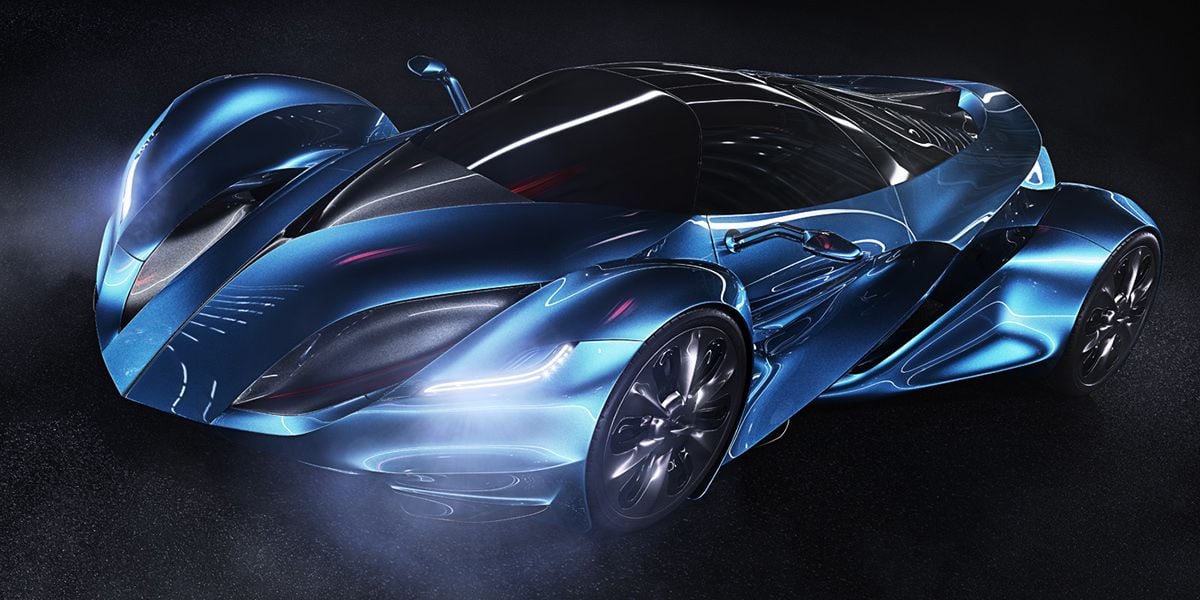 Challenges and Considerations in Futuristic Car Design
Challenges and Considerations in Futuristic Car Design
While the promise of futuristic car design is immense, several challenges must be addressed to bring these concepts to fruition.
A. Regulatory and Safety Standards
Designers must navigate complex regulatory landscapes that vary across regions. Key challenges include:
A. Compliance with Emissions Standards: Ensuring that vehicles meet stringent environmental regulations.
B. Safety Protocols: Balancing innovative designs with rigorous safety standards to protect occupants.
C. Intellectual Property: Safeguarding unique design elements and technological innovations from infringement.
B. Balancing Form and Function
The pursuit of futuristic aesthetics can sometimes conflict with practical functionality:
A. Ergonomics: Ensuring that bold designs do not compromise driver comfort or accessibility.
B. Durability: Innovative materials and designs must withstand real-world conditions and wear.
C. Cost Efficiency: Advanced technologies and materials can increase production costs, making affordability a key concern.
C. Integration of New Technologies
Introducing cutting-edge technologies into vehicle design requires a careful balance:
A. Seamless Connectivity: Ensuring that digital and physical systems integrate without disruption.
B. User Adoption: Overcoming resistance to change by designing intuitive, user-friendly interfaces.
C. Maintenance and Upgrades: Establishing reliable support systems for software updates and hardware maintenance.
Case Studies: Pioneers in Futuristic Car Design
Several leading automotive companies and independent designers are at the forefront of this revolution, pushing the boundaries of what is possible. These case studies highlight innovative approaches and successful implementations.
A. Renowned Automotive Manufacturers
A number of established car manufacturers have embraced futuristic design trends:
A. Electric Pioneers: Companies that have successfully integrated electric powertrains with advanced design elements, offering vehicles that combine performance with eco-friendliness.
B. Autonomous Leaders: Manufacturers investing heavily in self-driving technology, transforming vehicle interiors and exteriors to accommodate a new era of mobility.
C. Collaborative Ventures: Partnerships between traditional automakers and tech giants that have yielded breakthrough concepts and prototypes.
B. Independent Designers and Concept Studios
Smaller design studios and independent innovators are also making significant contributions:
A. Visionary Concepts: Designers who create bold, forward-thinking models that challenge conventional automotive paradigms.
B. Experimental Materials: Innovators exploring alternative materials and sustainable practices to redefine vehicle construction.
C. Interactive Prototypes: Use of VR and AR to create interactive, user-centered designs that anticipate future consumer needs.
Future Trends and Predictions
Looking ahead, several trends are poised to define the next generation of car design.
A. Modular and Customizable Designs
The concept of modularity is gaining traction as designers create vehicles that can be easily customized:
A. Interchangeable Components: Allowing users to personalize elements such as interiors, exteriors, and powertrains.
B. Scalable Platforms: Designing vehicles that can be adapted for various uses, from urban commuting to long-distance travel.
C. Future-Proofing: Ensuring that designs can accommodate future technological upgrades without extensive re-engineering.
B. Integration of Smart Technologies
As connectivity becomes ubiquitous, smart technologies will further influence car design:
A. Embedded AI: Intelligent systems that adapt to driver behavior and optimize performance in real time.
B. Sensor Networks: Comprehensive sensor arrays that enhance safety, navigation, and vehicle maintenance.
C. Cloud Connectivity: Seamless integration with digital ecosystems to provide real-time updates, remote diagnostics, and enhanced user experiences.
C. Sustainable and Eco-Friendly Mobility
Sustainability remains a central pillar in futuristic car design:
A. Zero-Emission Vehicles: Continued emphasis on electric and hydrogen-powered vehicles as alternatives to fossil fuels.
B. Green Manufacturing: Adoption of sustainable practices in vehicle production, from renewable energy sources to eco-friendly materials.
C. Circular Economy Models: Designing vehicles with end-of-life recycling and reuse in mind, reducing environmental impact.
The Intersection of Art and Engineering
Futuristic car design is a delicate balance between artistic expression and technical precision. The creative process involves collaboration between designers, engineers, and technologists to achieve a harmonious blend of beauty and functionality.
A. Collaborative Creativity
Modern car design is inherently interdisciplinary. Teams work together to ensure that every element of a vehicle—its form, function, and technology—is aligned with the overall vision:
A. Design Studios: Creative spaces where artists and engineers brainstorm and prototype revolutionary ideas.
B. Technical Integration: Engineers work hand-in-hand with designers to ensure that artistic visions can be translated into viable, safe vehicles.
C. User-Centered Focus: Extensive research and testing to ensure that innovative designs meet real-world needs and preferences.
B. The Role of Aesthetics
While performance and technology are critical, the aesthetic appeal of a vehicle remains a major selling point:
A. Emotional Connection: Beautiful, futuristic designs evoke emotions and build a strong brand identity.
B. Market Differentiation: Distinctive design features help vehicles stand out in a competitive marketplace.
C. Timeless Appeal: Striking designs that combine modern elements with classic principles create vehicles that remain attractive over time.
Conclusion
The journey of car design from traditional forms to futuristic concepts is a testament to human creativity and technological progress. Today’s car designers are not only reimagining the aesthetics of vehicles but are also integrating advanced technologies that promise enhanced performance, safety, and sustainability. From revolutionary powertrains and autonomous driving systems to smart interiors and eco-friendly materials, the future of automotive design is bright and full of potential.
By embracing digital tools, leveraging AI, and prioritizing user-centric innovations, designers are crafting vehicles that reflect our aspirations for a smarter, cleaner, and more connected world. As we move forward, the collaboration between art and engineering will continue to drive breakthroughs, making futuristic car designs not just a vision, but a reality that transforms the way we move.
The automotive industry is on the cusp of a new era, and the vehicles of tomorrow will embody the fusion of technology, sustainability, and design excellence. For consumers, this means more than just a mode of transportation—it offers a glimpse into a future where mobility is smarter, safer, and more sustainable. As trends evolve and technologies mature, one thing remains clear: the future of car design is bound to be as innovative and dynamic as the minds that create it.

